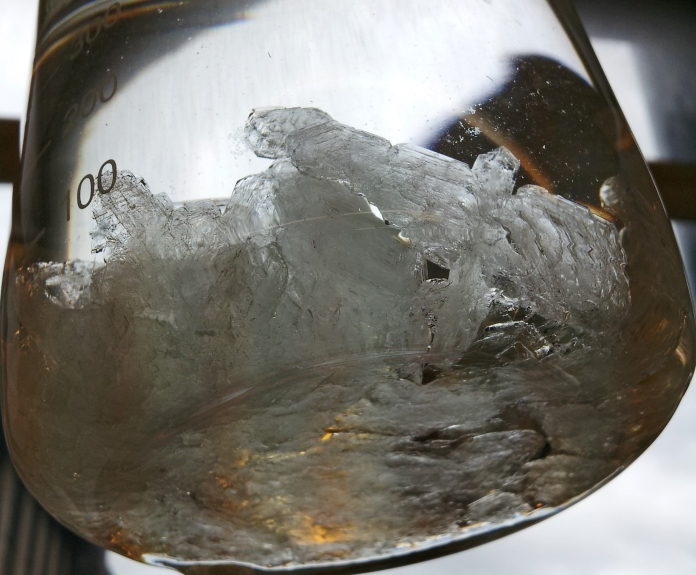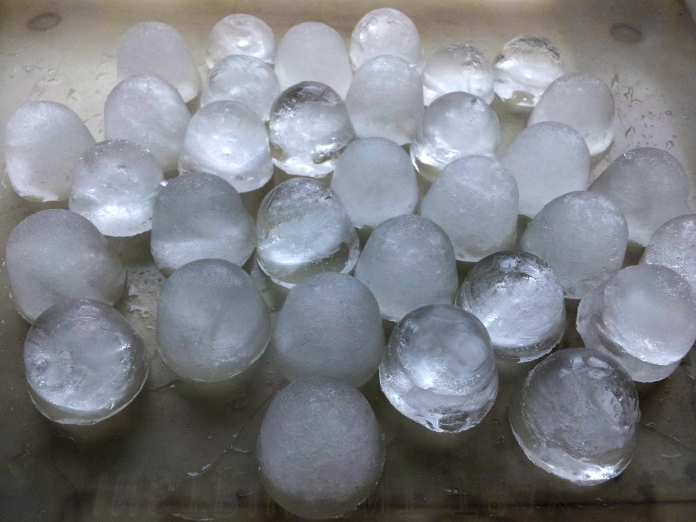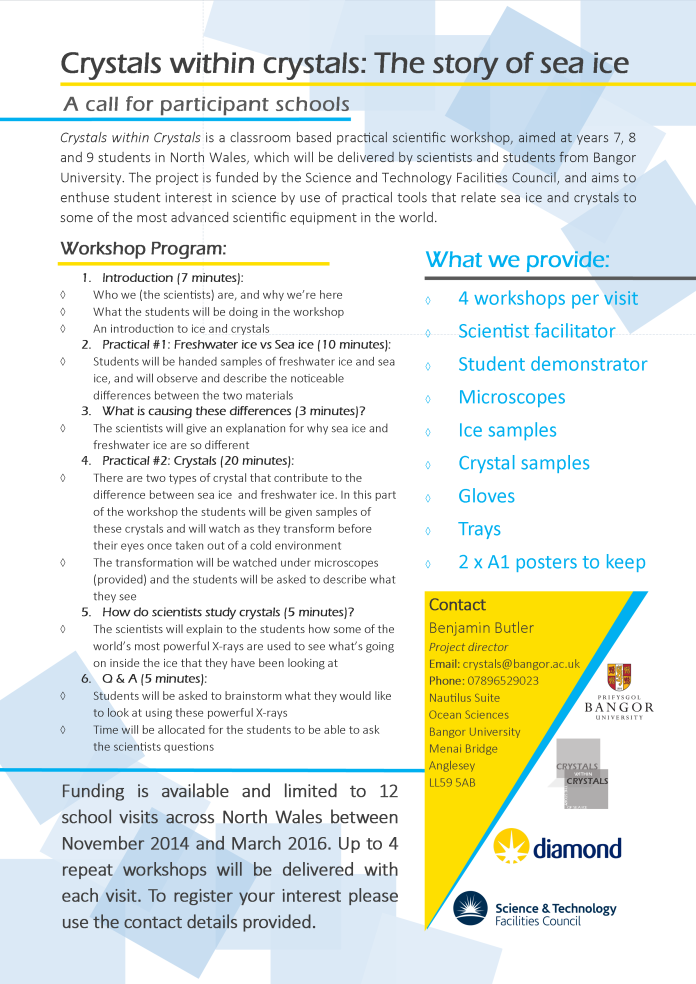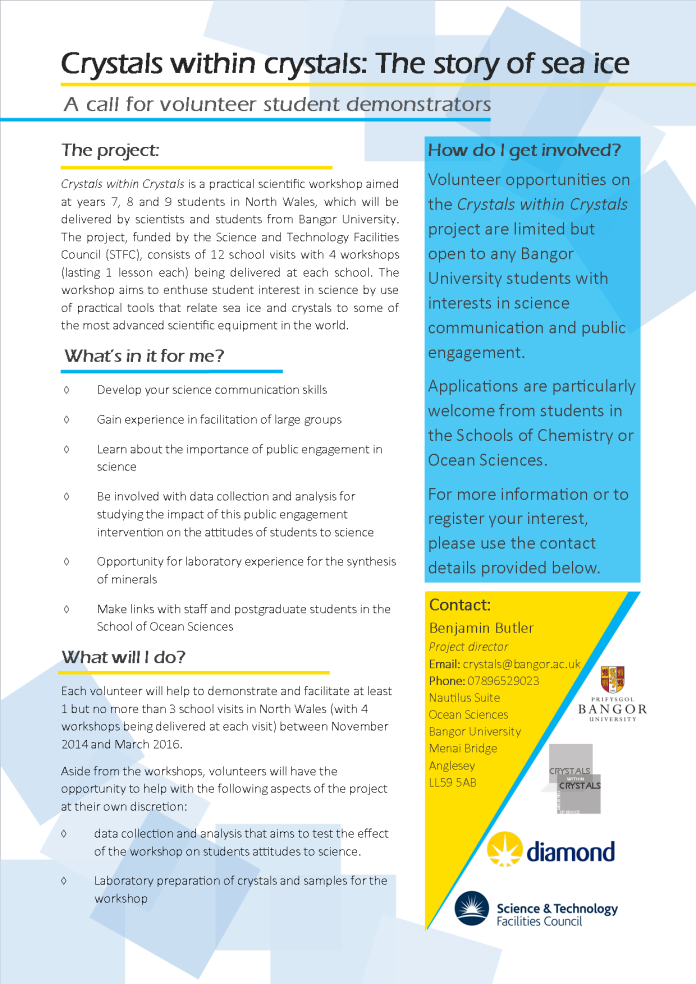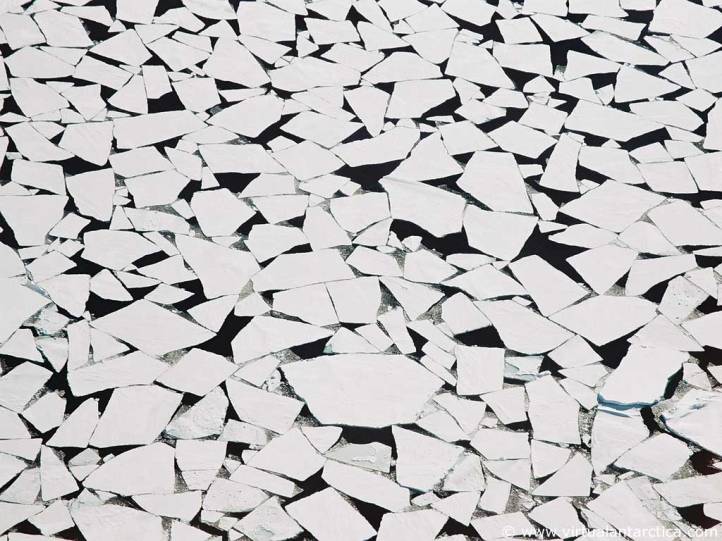We’ve been busy in the lab getting bits and bobs ready recently, which includes preparing (probably) the worlds largest reserves of hydrohalite! Hydrohalite is a crystal that is found in sea ice all over the worlds polar regions, but yet still remains very elusive. Participants of the workshops will get a chance to be one of of just a few people that have ever seen and handled this crystal! A photo of hydrohalite growing in our lab is shown below. Simply put, it’s the cold version of table salt (NaCl), the only differences is that the crystal structure of hydrohalite has 2 water molecules attached to it, therefore making it NaCl.2H2O.
In other news, we have also come up with a fun exercise that will be used to get the students to notice how sea ice and freshwater ice differ from each other. The picture below shows a selection of ice cubes that we have made. Some are made from seawater, and others from freshwater. There are some noticeable differences between these two types of ice that you may be able to make out from the photo alone. Students will be split into groups, each with a tray of ice cubes. The groups will compete against each other to sort the ice cubes into sea ice and freshwater ice by deducing the differences between the two types as quickly as possible!

